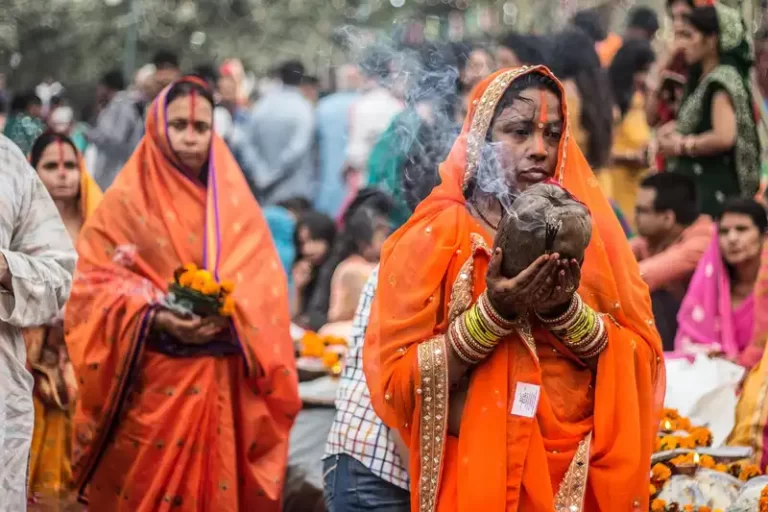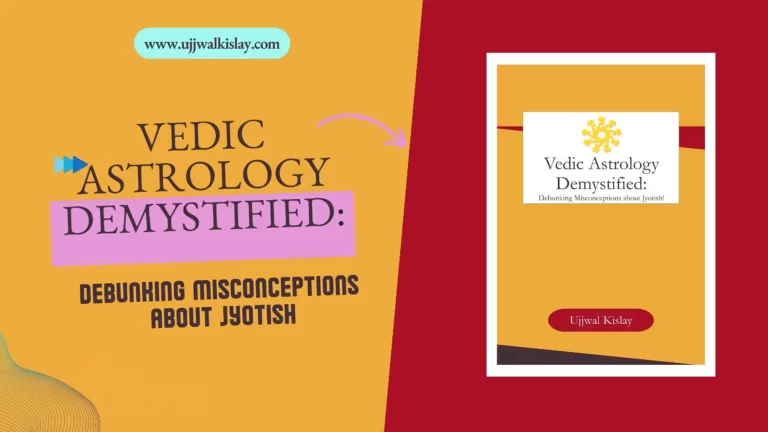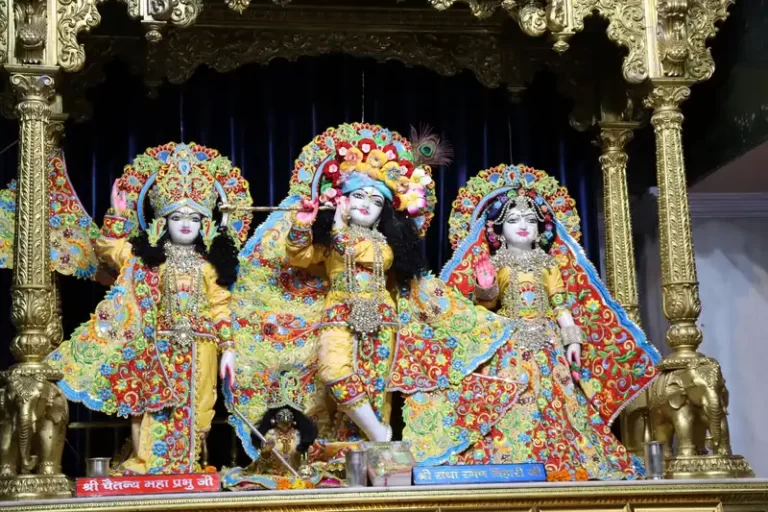Hindu Panchanga: Unveiling the 5 Elements of Cosmic Almanac
Introduction to Hindu Panchanga:

Hindu Panchanga, an arcane Vedic Astrology almanac is rooted in the cryptic Sanskrit “pancha” (five) and “anga” (limbs). These Time’s five limbs – Tithi, Vara, Nakshatra, Yoga, and Karana – intricately entwine cosmic and earthly realms, capturing time and space’s core.
Soar to Vedic Astrology’s zenith, the mesmerizing Hindu Panchanga, a pinnacle of timekeeping. Unveil the cosmic ballet, where celestial bodies shape life’s dimensions. With finesse, it decodes lunar days (Tithi), week days (Vara), moon lodgings (Nakshatra), lunar-solar unions (Yoga), and half-Tithi phases (Karana), guiding rituals, celestial ceremonies, and farming. Embrace Panchanga’s wisdom, traverse time’s enigmas with awe, and uncover destiny’s symphony.
Hindu Year and Months:
The Hindu calendar blends lunar and solar cycles to gauge time, making its New Year’s arrival variable, falling around March or April in the Gregorian calendar. The exact date varies per regional tradition.
In North India, especially Uttar Pradesh, Bihar, and Rajasthan, the Hindu New Year “Vikram Samvat” or “Baisakhi” is observed on the first day of Chaitra month (March-April), honoring the legendary king Vikramaditya.
Within the Hindu calendar, a standard year comprises 12 lunar months, called “maas,” linked to the moon’s path through the zodiac signs. These months span 29 or 30 days, determined by the month and year. Here are the names and rough durations of the 12 maas in a regular year:
- Chaitra: First month, March-April, heralds spring. Spans 30 or 31 days.
- Vaishakha: Second month, April-May, tied to Akshaya Tritiya and fresh starts. Spans 30 or 31 days.
- Jyeshtha: Third month, May-June, heats up, linked to harvest. Spans 30 or 31 days.
- Ashadha: Fourth month, June-July, starts monsoon. Spans 30 or 31 days.
- Shravana: Fifth month, July-August, ties to Raksha Bandhan, spiritual moments. Spans 30 or 31 days.
- Bhadrapada: Sixth month, August-September, Ganesh Chaturthi, worship. Spans 30 or 31 days.
- Ashwina: Seventh month, September-October, Navaratri to Dussehra. Spans 30 or 31 days.
- Kartika: Eighth month, October-November, sacred with Diwali. 29 or 30 days.
- Margashira: Ninth month, November-December, devotion-filled. 29 or 30 days.
- Pausha: Tenth month, December-January, winter and festivities. 29 or 30 days.
- Magha: Eleventh month, January-February, Vasant Panchami, spiritual. 29 or 30 days.
- Phalguna: Twelfth month, February-March, ends with Holi. 29 or 30 days.
- Adhika Maas: On occasion, a “bonus” month, Adhika Maas or Purushottam Maas, aligns lunar-solar differences, ideal for spiritual practices and charity.
Within the Hindu calendar, a month follows the 29.5-day lunar cycle. This month is split into two “Pakshas” or fortnights, each about half a lunar month, containing 15 “tithis,” distinct lunar days.
The Components of Hindu Panchanga:

Tithi: The Lunar Epoch:
Tithi, an intricate term in the Hindu Panchanga, embodies the moon’s constant change—a lunar day. In the lunar framework, tithi is vital, born from the Sun-Moon interplay.
The lunar stage features thirty tithis, each spanning twelve degrees on the Moon’s path. Two key sides emerge— “Shukla Paksha,” waxing’s peak, and “Krishna Paksha,” waning’s end. Each half has fifteen tithis. Tithi’s mathematical essence arises from the Sun-Moon interplay.
A concise algorithm presents itself, orchestrating the birth of a tithi:
Tithi = (Moon's Longitudinal Angle - Sun's Longitudinal Angle) / 12
This computation is enriched by the following elements:
– Moon’s Longitudinal Angle: Reflecting the Moon’s current position in its celestial circuit.
– Sun’s Longitudinal Angle: Describing the Sun’s present position along its celestial journey.
Here’s a breakdown of the tithis:
Shukla Paksha:
- 1. Pratipada
- 2. Dwitiya
- 3. Tritiya
- 4. Chaturthi
- 5. Panchami
- 6. Shashthi
- 7. Saptami
- 8. Ashtami
- 9. Navami
- 10. Dashami
- 11. Ekadashi
- 12. Dwadashi
- 13. Trayodashi
- 14. Chaturdashi
- 15. Purnima (Full Moon)
Krishna Paksha:
- 1. Pratipada
- 2. Dwitiya
- 3. Tritiya
- 4. Chaturthi
- 5. Panchami
- 6. Shashthi
- 7. Saptami
- 8. Ashtami
- 9. Navami
- 10. Dashami
- 11. Ekadashi
- 12. Dwadashi
- 13. Trayodashi
- 14. Chaturdashi
- 15. Amavasya (New Moon)
Vara: The day of the week:
In Hindu Panchanga contexts, “Vara” signifies weekdays. Vara relates to the Indian calendar’s weekdays, with each day linked to a celestial body, bearing unique meanings and auspiciousness.
Keep in mind that the Vedic Day begins at sunrise and extends until the next sunrise. The time from sunrise to sunset is known as Ahas or Daytime, while the time from sunset to the following sunrise is termed Ratri or Nighttime. Ahas and Ratri together form an Ahoratra, constituting the Vedic Day.
Here are the days of the week in the Hindu calendar along with their corresponding ruling planets:
- 1. Sunday (Ravivāra) – Ruled by the Sun (Surya)
- 2. Monday (Somavāra) – Ruled by the Moon (Chandra)
- 3. Tuesday (Mangalavāra) – Ruled by Mars (Mangala)
- 4. Wednesday (Budhavāra) – Ruled by Mercury (Budha)
- 5. Thursday (Guruvāra) – Ruled by Jupiter (Guru or Brihaspati)
- 6. Friday (Shukravāra) – Ruled by Venus (Shukra)
- 7. Saturday (Shanivāra) – Ruled by Saturn (Shani)
Distinct days hold importance for various endeavors. Individuals frequently select days for religious rites, ceremonies, and pivotal occasions aligned with the attributes linked to the ruling planet of each day.
Nakshatra: The lunar mansion:
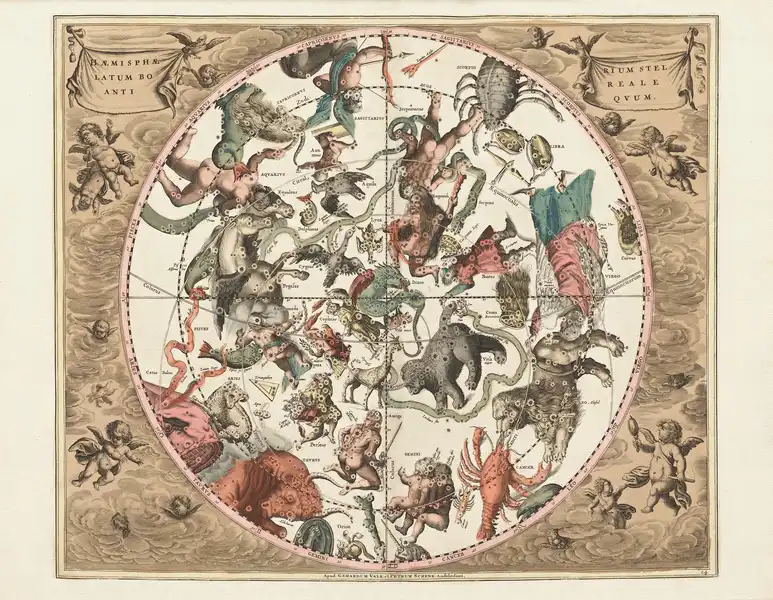
“Nakshatra” in Hindu astrology and astronomy denotes lunar mansions or constellations along the Moon’s monthly orbit around Earth. Nakshatras hold vital importance in the Hindu Panchanga, serving diverse astrological and predictive roles.
There are 27 nakshatras, each covering a zodiac segment. Each nakshatra has unique qualities, attributes, and deities. They are pivotal in shaping aspects of individuals’ lives, including birth charts, horoscopes, and compatibility assessments.
Here is a list of the 27 nakshatras along with their approximate corresponding Western zodiacal positions:
- 1. Ashwini
- 2. Bharani
- 3. Krittika
- 4. Rohini
- 5. Mrigashira
- 6. Ardra
- 7. Punarvasu
- 8. Pushya
- 9. Ashlesha
- 10. Magha
- 11. Purva Phalguni
- 12. Uttara Phalguni
- 13. Hasta
- 14. Chitra
- 15. Swati
- 16. Vishakha
- 17. Anuradha
- 18. Jyeshtha
- 19. Mula
- 20. Purva Ashadha
- 21. Uttara Ashadha
- 22. Shravana
- 23. Dhanishta
- 24. Shatabhisha
- 25. Purva Bhadrapada
- 26. Uttara Bhadrapada
- 27. Revati
Each nakshatra further divides into four parts, known as “padas,” totaling 108 padas across the system.
The nakshatra where the Moon resides during birth is the Janma Nakshatra, crucial in Vedic Astrology. Nakshatras hold immense importance, offering astrologers insights to forecast and evaluate an individual’s characteristics, career potentials, relationships, and more.
Yoga: The union of lunar and solar movement:
In the Hindu Panchanga framework, “Yoga” signifies a precise Sun-Moon angular alignment. Each unique Yoga has its name and qualities, progressing sequentially over a month. Yoga calculation relies on both Sun and Moon positions’ combined values.
Here is a list of 27 Yogas:-
- 1. Vishkambha
- 2. Priti
- 3. Ayushman
- 4. Saubhagya
- 5. Shobhana
- 6. Atiganda
- 7. Sukarma
- 8. Dhriti
- 9. Shoola
- 10. Ganda
- 11. Vriddhi
- 12. Dhruva
- 13. Vyaghata
- 14. Harshana
- 15. Vajra
- 16. Siddhi
- 17. Vyatipata
- 18. Variyan
- 19. Parigha
- 20. Shiva
- 21. Siddha
- 22. Sadhya
- 23. Shubha
- 24. Shukla
- 25. Brahma
- 26. Indra
- 27. Vaidhriti
Each Yoga boasts distinct attributes and impacts, employed in the Hindu Panchanga to gauge a day’s quality and its aptness for diverse endeavors.
Karana: Half a Tithi:
In Hindu Panchanga, “Karana” is a crucial component among the five used to ascertain a day’s quality. Karana constitutes half of a lunar day or “Tithi.” The Sanskrit-rooted term “Karana” translates to “a part.”
There are 11 Karanas, and they are as follows:
- 1. Bava
- 2. Balava
- 3. Kaulava
- 4. Taitila
- 5. Gara
- 6. Vanija
- 7. Vishti
- 8. Shakuni
- 9. Chatushpada
- 10. Naga
- 11. Kimstughna
Among the 11 Karanas, first 7 are considered moveable, while the remaining 4 belong to the Sthira category. The key distinction lies in their occurrence within the Moon cycle: moveable Karanas vary in timing, while the 4 fixed Karanas maintain a consistent position throughout the cycle.
The Karana type for a day, along with other Panchanga components like Nakshatra, Yoga, Tithi, and Vara, is combined to evaluate the auspiciousness and appropriateness of diverse activities.
Hindu Panchanga and Vedic Astrology:
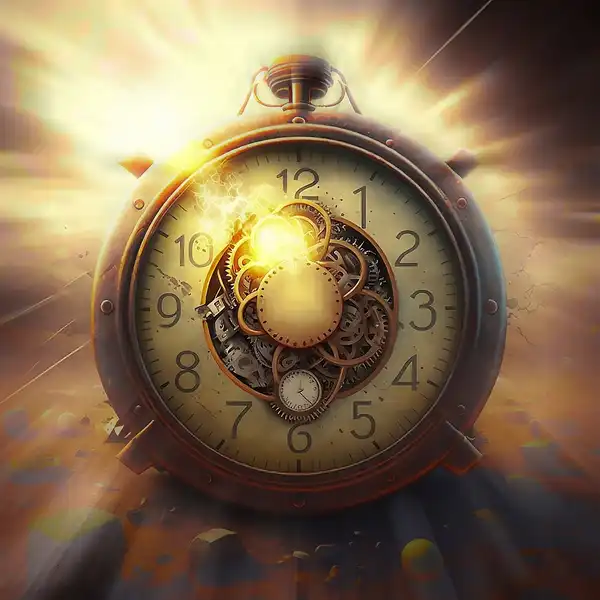
The Hindu Panchanga bridges earthly existence with celestial forces in Vedic astrology. It unveils planetary interactions, revealing the cosmic design shaping human lives. Through Tithi, Vara, Nakshatra, Yoga, and Karana, the Panchanga exposes the cosmic symphony guiding Earth’s events and destinies. Hindu Panchanga serves as a tool for assessing Natal Horoscopes, Horary charts, and Mundane aspects like weather, war, illnesses, and calamities. It also plays a pivotal role in Muhurta, a distinctive facet of Vedic Astrology.
Muhurta, deeply ingrained in Vedic astrology and Indian tradition, involves choosing propitious timings for various endeavors. This concept is grounded in the conviction that celestial positions affect human outcomes. Through Muhurta, individuals aim to leverage cosmic forces for success, prosperity, and harmony.
Guided by planetary alignment and lunar phases, Muhurta identifies optimal moments for actions. It delves into celestial dynamics, planetary positions, and their human impacts. While modernity melds tradition with practicality, Muhurta endures, especially in ceremonies, weddings, and significant life events for astrology adherents. It underscores the profound link between human existence and the universe.
The Hindu Panchanga guides significant life events, from sacred beginnings to marital unions. Abiding by its cosmic advice invites grace, aligning blessings on life’s journey.
Eclipse and Hindu Panchanga:
The Panchanga is pivotal in foreseeing and comprehending solar and lunar eclipses. By studying Tithi, Nakshatra, and Yoga arrangements, astrologers predict eclipse occurrences. These calculations unveil eclipse type, duration, and visibility, benefiting astronomers and enthusiasts. Moreover, the Panchanga reveals eclipse impacts, guiding appropriate measures and spiritual practices.
In Vedic thought, eclipses hold deep spiritual meaning. They offer introspection, meditation, and growth opportunities. Eclipse alignments amplify energies, ideal for reflection and transcendence. Seekers meditate, chant, and perform charity for elevated consciousness. Eclipse energies nurture spiritual practices, forging a profound self-universe connection.
Hindu Panchanga and Festivals:
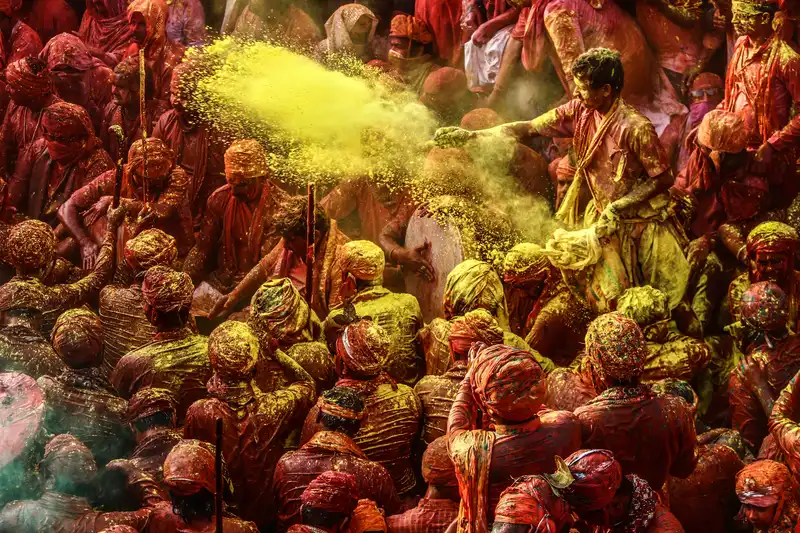
The Hindu Panchanga guides festivals’ alignment with auspicious cosmic timings, infusing celebrations with divine grace. Festivals coincide with specific Tithis and Nakshatras, chosen for favorable planetary positions. This harmony enhances spirituality and unity with cosmic order.
Major festivals follow Hindu Panchanga calculations. Diwali’s date, for instance, aligns with Kartik’s Amavasya (New Moon). Holi often coincides with Phalguna’s Full Moon (Purnima). Hindu Panchanga ensures festivals occur on spiritually significant days, infusing blessings and energies.
Hindu Panchanga’s interplay with eclipses and festivals unveils celestial insights and spiritual practices. It empowers understanding of eclipse spirituality. Aligning festivals with cosmic times deepens celebrations and divine connection. Embracing Hindu Panchanga wisdom enriches life’s journey with mindfulness, reverence, and spiritual growth.
Hindu Panchanga in Ayurveda:
Ayurveda recognizes the cosmic influence of the Hindu Panchanga on human health. Aligning with favorable timings harmonizes bodily rhythms, optimizing vitality and mental balance. Conversely, awareness of unfavorable configurations empowers precautionary health measures.
Ayurveda synchronizes with the Panchanga’s cosmic dance. Selecting timely moments for therapies and practices enhances healing. This attunement fosters holistic well-being and spiritual growth.
In essence, the Hindu Panchanga interlaces celestial and earthly realms in Vedic astrology. Insights into celestial bodies offer a cosmic life guide. Embracing it helps navigate destiny, invoking grace for a purposeful life. Integration with Muhurta and Ayurveda enriches well-being and prosperity.
Hindu Panchanga and Agriculture:

The Panchanga profoundly influences farming, guiding practices with celestial insight. By utilizing Tithi, Vara, Nakshatra, Yoga, and Karana energies, farmers optimize efforts and yields. Knowing auspicious days for planting, harvesting, and more aligns farming with cosmic rhythms.
The Panchanga reveals prime times for agricultural tasks. Some Tithis and Nakshatras favor planting, synchronizing with Earth’s fertility. Auspicious choices for harvesting ensure abundant yields. Following these practices maximizes crop potential and reduces challenges.
Incorporating Panchanga’s cosmic rhythms nurtures nature harmony. Recognizing celestial effects on soil, plants, and climate informs decisions. Timed irrigation, fertilization, and pest control with Panchanga boosts agricultural effectiveness. Acknowledging inauspicious days averts setbacks.
Hindu Panchanga is pivotal in farming, offering timeless wisdom aligning with cosmic cycles. Its guidance cultivates mindful, sustainable practices. Harmonizing with cosmic rhythms fosters productivity and deep reverence for life’s interconnectivity within the cosmic weave.
Tradition vs. Modern Applications:

The age-old traditional Panchanga has occupied a sacred and indispensable place in countless lives over centuries. Rooted in ancient Vedic wisdom, it serves as a celestial guide for daily life. Tithi, Vara, Nakshatra, Yoga, and Karana interactions in the traditional Panchanga offer insights into propitious timings for events. It also harmonizes Ayurveda with cosmic rhythms for well-being. Beyond astrology, the traditional Panchanga infuses life with spirituality and reverence.
In the digital era, traditional Hindu Panchanga face adaptation challenges. Panchanga apps and online tools bridge the gap, providing accessible insights. While convenient, their accuracy and adherence to Vedic principles vary. Users must choose reliable sources upholding traditional Panchanga knowledge.
Integrating Panchanga data into digital calendars is a modern adaptation. It marries daily routines with celestial guidance, aligning activities with cosmic currents. Yet, care is needed to ensure accurate interpretation.
Traditional Hindu Panchanga’s sacred significance endures while modern adaptations arise. Balancing authenticity and technology preserves its wisdom. Panchanga apps offer accessibility but need scrutiny for Vedic principles. By melding tradition and technology, individuals uphold cosmic wisdom for meaningful living.
Conclusion:
Amidst modern strides, Hindu Panchanga’s timeless wisdom endures as an ancient treasure. Handed down through generations, it yields insights into cosmic rhythms and life’s voyage. Integrating Panchanga into daily life aligns with cosmic forces, deepening comprehension of one’s place in the universe’s grandeur.
Panchanga underscores interconnectedness and governing rhythms. Embracing Tithi, Vara, Nakshatra, Yoga, and Karana aligns with life’s flow. Mindful choices and reverence nurture spiritual growth. Honoring Hindu Panchanga’s wisdom opens paths to cosmic guidance, enriching lives with purpose, meaning, and celestial grace.
I aspire for this article to provide you with assistance. Should you discover value within these words, kindly contemplate sharing them with your loved ones. I invite you to spare a moment to offer your thoughts and appraisals below. For further remarkable content akin to this, I encourage you to delve into our website. Additionally, I extend an invitation to subscribe to my YouTube channel for forthcoming materials of similar nature. Lastly, feel unrestrained to establish a connection with me through social media. Wishing you a splendid day ahead!
हरि ॐ तत्सत्
FAQs:
Here are some frequently asked questions (FAQs) about the Hindu Panchanga:-



